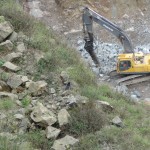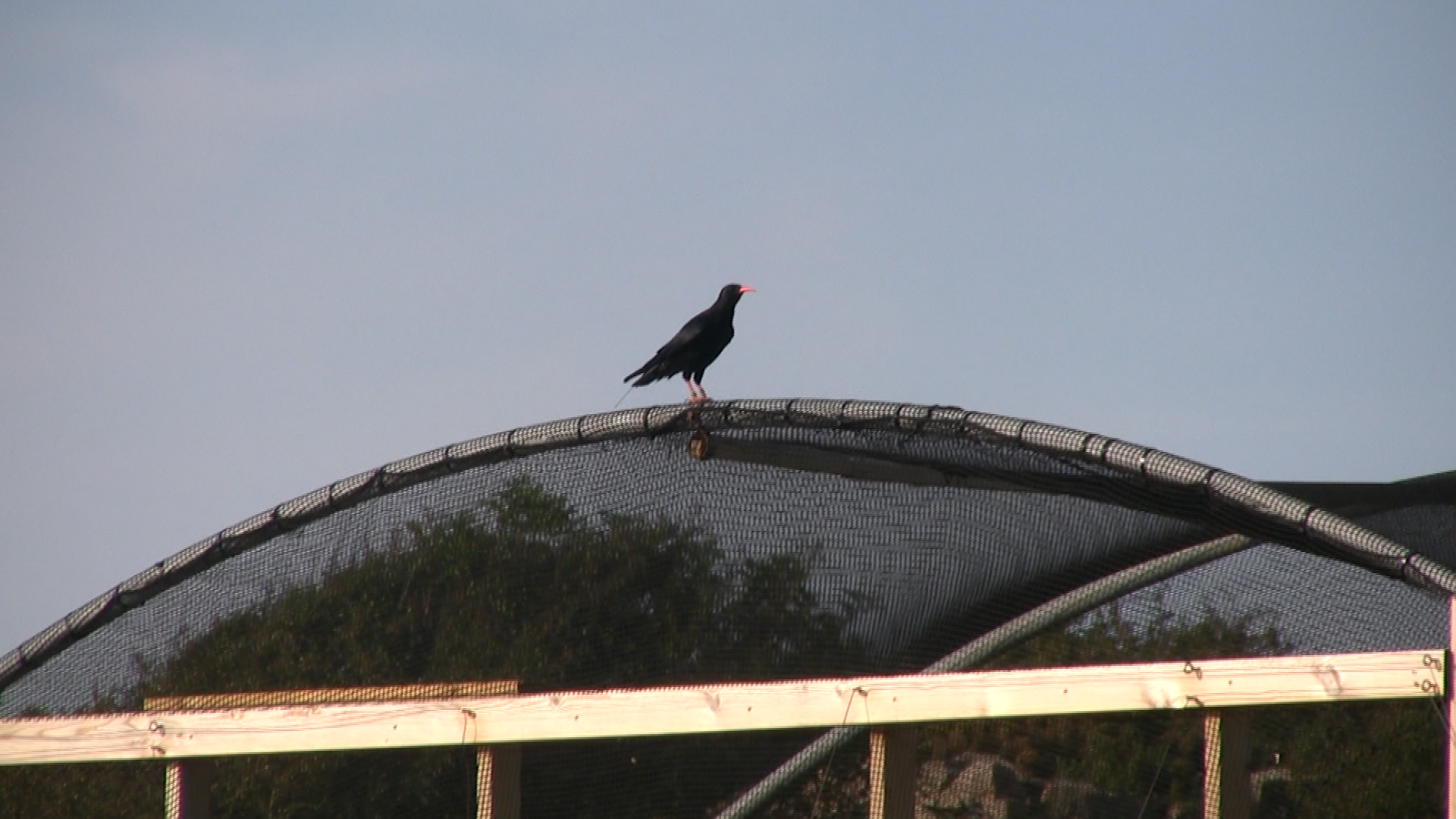Radio transmitters and veterinary health checks
The four remaining birds without transmitters were caught up on the 20th to have new transmitters attached. In the process the other three were also caught to check there were no issues with their new transmitters.
None of the choughs had completed their moult. However, they are at a very advanced stage and therefore fine for a release. It was noted that a knot was loose on a couple of transmitters that had been fitted last month. This was not deemed a huge concern since they are attached in other places including the transmitter being glued to the feather shaft.
Habitat management
 This month the National Trust began treating designated areas of bracken with an herbicide as part of their removal programme. Asulox was applied using a hand sprayer. As a safety precaution all the sheep were temporarily removed from the cliffs and housed in the aviary field for four weeks.
This month the National Trust began treating designated areas of bracken with an herbicide as part of their removal programme. Asulox was applied using a hand sprayer. As a safety precaution all the sheep were temporarily removed from the cliffs and housed in the aviary field for four weeks.
The choughs did not seem to mind having new neighbours. In fact it probably provided a novel form of enrichment.  The sheep were moved back out before the end of the month.
The sheep were moved back out before the end of the month.
Soft release underway
The soft release phase began at the end of August (report). The first day went better than imagined with three birds venturing outside. Albeit on the shelving around the aviary. Green (PG) had the honour of taking the maiden flight onto the roof of the aviary and around the tops of the hedges, but didn’t go far. When it came to calling them back after 30 minutes the whole group flew down to the shed end for the food. Green was faced with the dilemma of how to get through roof netting to reach the food. After a quick brainstorming session he remembered where the hatches were and flew back in.
The second night was similar in that three ventured outside this time being a bit more adventurous. When it came time to call them back the three were on the roof of the shed. Eager to get to food two of them worked out straight away where to go. Red (RD), on the other hand, was completely baffled and spent the next two hours trying to figure out how to get in. Her dilemma was twofold: how to get to the food through netting?; how to get to the food without leaving her partner, Orange (OR), who was locked in the shed? She ended up spending the night on the roof. At 6am when keepers returned she was still perplexed. By 9am she had been coaxed inside by giving the birds in the aviary access to the whole polytunnel. As they flew to the end where the hatches are she followed. After a few minutes of letting her familiarise herself with the shelving the aviary birds were shuffled back and the hatches were opened.
As this is a pilot study Red’s experience has provided an opportunity to learn and improve. Roosting boxes have now been added outside the aviary in case a bird repeats her experience. This might also act as another anchor for keeping the birds close to the aviary and reduce the need to search for roost sites further away.




























 Now that there are birds out on the coast, please don’t hesitate to send in your sightings. Check
Now that there are birds out on the coast, please don’t hesitate to send in your sightings. Check 


